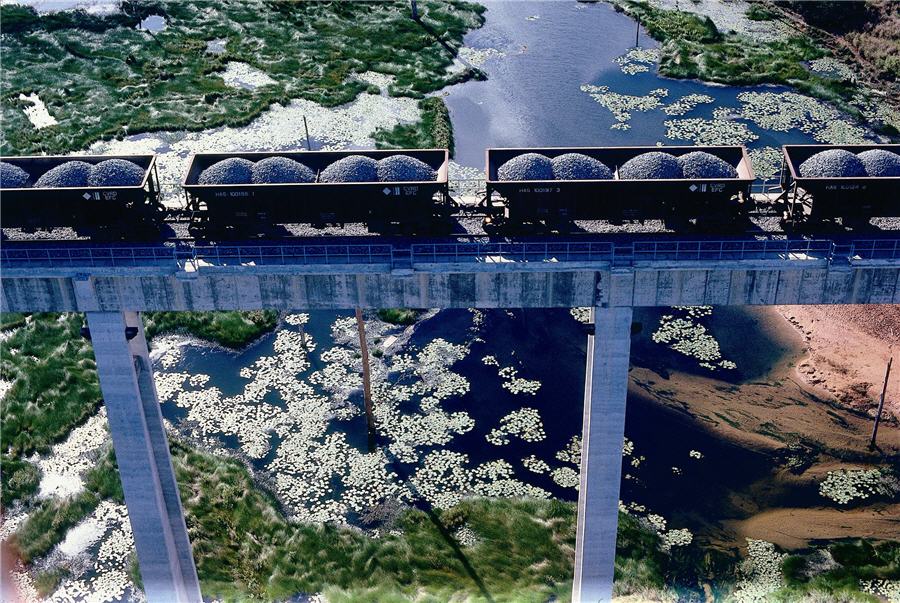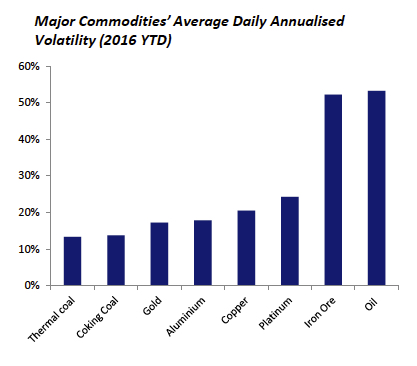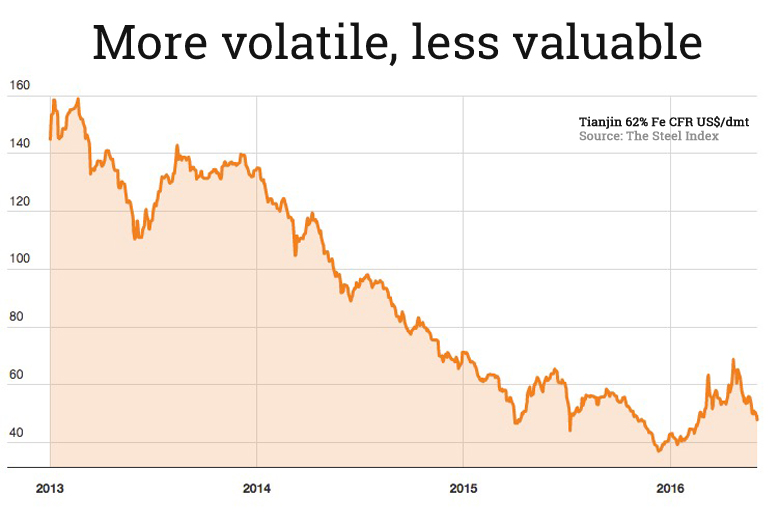
On Thursday the Northern China benchmark iron ore price dropped 2.8% to $47.90 per dry metric tonne, the lowest since mid-February according to data supplied by The Steel Index. The steelmaking raw material is down 26% over the past month and is now just holding onto double digit gains for the year.
Coking coal also had a torrid month after coming close to triple digits in April, only to fall back to the early $80s by the end of May and wiping out all of 2016’s gains. Steel prices underperformed iron ore in May, cutting further into margins at Chinese blast furnaces which had brought 50m tonnes of capacity back online.
Due to a lack of clearer policy direction from Beijing, market uncertainty and price volatility may remain relatively high in the near-term
The outlook for Chinese iron ore and steel demand was also crimped by a disappointing reading of Chinese manufacturing activity indicating Beijing’s economic stimulus program is already running out of steam.

Source: Singapore Exchange
After a strong first quarter, the Caixin manufacturing purchasing managers‘ index (PMI) for May fell back for the second month in a row to 49.2. While the reading was only marginally lower than April, base metal bulls were hoping for a continued recovery .
A reading below 50 indicates weakening operating conditions and the index has now been stuck below neutral territory for fifteen months straight. May’s reading was hurt by a drop in new orders and export contracts, pricing and most worryingly the rate of factory job losses in May were close to a post-global financial crisis record.

Source: Singapore Exchange
The Singapore Exchange in a research report says China’s steel demand from the real estate and infrastructure sectors has improved in recent months, driven by stimulus measures and state-backed investment. However, due to a lack of clearer policy direction from Beijing, “market uncertainty and price volatility may remain relatively high in the near-term.”
The forward curve on the Singapore Exchange, the first to launch iron ore price derivatives in 2009, looks pretty ugly and even before the recent drop, the consensus forecast of analysts polled by FocusEconomics was a sub-$50 average during the second quarter.
Of the 17 analysts polled the most bearish was JP Morgan at an average of just $38, while even the most optimistic, Oxford Analytics saw the price topping out at $55. Goldman Sachs sees iron ore averaging $38 in the final quarter of this year and an average of $46 for the whole year.
The median forecast for 2017 is even more pessimistic at $44.80 over the course of the year according to FocusEconomics data. Brazilian investment bank Itaú BBA’s reading of the market sees iron ore averaging just $41.80 next year.

The SteelIndex, a unit of S&P Global Platts, first started tracking the spot price in November 2009.
Before the emergence of quarterly contract pricing and eventually a spot and futures price, the seaborne trade was controlled by the Big 3 producers – Vale, Rio Tinto and BHP Billiton – which set prices during secretive negotiations with Japanese steelmakers and signed annual contracts.
The annual contract price of iron ore had never strayed far from $10 – $14 per tonne since the 1970s. Then at the end of 2004 all hell (for Chinese steelmakers that is) broke loose.
Growing Chinese port stockpiles saw action in the industry shift to mills and traders, ushering in the era of rapidly rising and volatile prices
After months of tough – often acrimonious – benchmark negotiations, the 2005 price was hiked a whopping 71.5%, marking the start of a supercycle and the beginning of the end of the old pricing system. But a tonne of ore was still only $28.11.
From 2005 onwards signs of ore shortages were everywhere as China’s 500 licensed importers chased tonnage on the sidelines of the global trade buying fines for as much as three times the benchmark contract price, still pegged at less than $40.
During 2008 negotiations the contract price was upped 68%, but the majors continued to lose out on billions under annual contract pricing. Growing Chinese port stockpiles saw action in the industry shift to mills and traders, ushering in the era of rapidly rising and volatile prices.
In a push by BHP Billiton CEO Marius Kloppers (against the wishes of his larger competitors), 2009 saw the collapse of the old benchmark system and at the same time a move away from a free-on-board pricing system to one where miners accept freight costs (and the profits they can make off them).
The spot price scaled $100 for the first time in November 2009 and on February 16 2011 reached an all-time high of $191.90 a tonne. Iron lost 40% in value over the course of 2015 after nearly halving in value the year before when the price dropped from $135 to $71.
On a spot price basis reached a record low of $37 on December 11 last year.